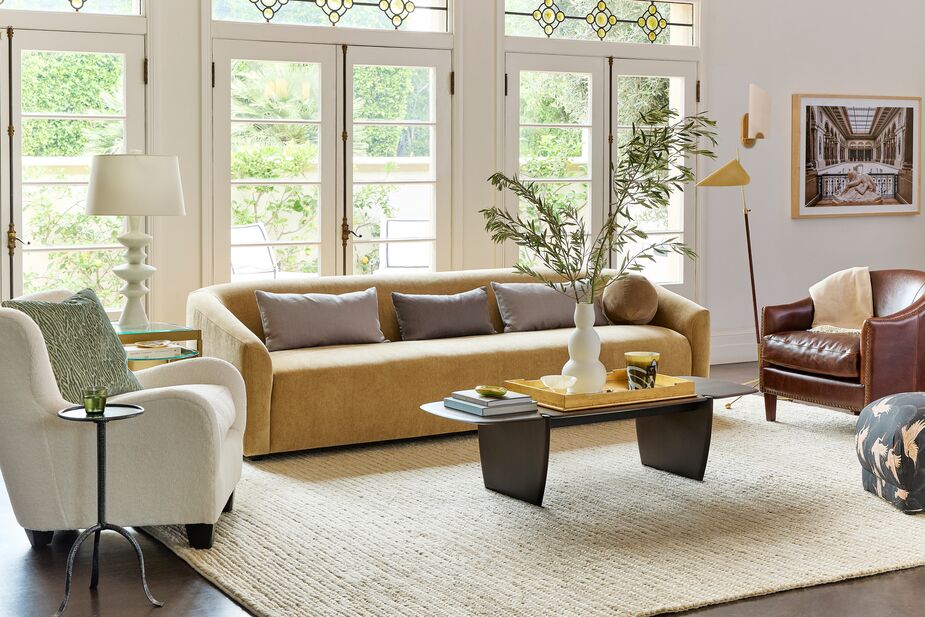Not sure what’s the right rug size for your space? From rugs for your living room and kitchen to runners for your hallways, we break down the essentials to help you find the perfect fit.

Above: the Ponderosa Rug in Birch, the Zola Curved Wingback Chair in Cream Sherpa, the Carver Performance Velvet Sofa in Camel, and the Mahogany Pi Coffee Table. Photo by Matt Albiani.
Living Room Rugs
There are several ways you can go here. If your living room is large, with furniture floating in the center, consider a rug big enough so that the furniture fits completely on top of it without feeling cramped. Be sure to leave at least several inches of naked floor visible around the rug’s perimeter, however.
If at least some of your furniture is close to or hugging the walls, aim to have the front two legs of the furniture on the rug. And if your living room is petite, you can probably get away with a smaller rug for use primarily under the coffee table or to define a seating area. If in doubt, however, go larger rather than smaller. A too-small rug instantly makes a room feel less than luxurious.

Above: the Malcolm Rug in Black.
Hallway Rugs
Runners are ideal for hallways (and narrow entryways too). If the space is especially narrow, place any furniture on one side and the runner on the opposite, with an equal amount of naked floor visible on both of the runner’s longer sides. In a larger space, furniture can flank the longer sides of the runner, and you don’t have to worry about whether the legs of the furniture are on or off it.

Above: the Melange Stripe Indoor/Outdoor Rug and the Koulika Stitch Muted Stripe Rug. Photo by Matt Albiani.
Bedroom Rugs
In the bedroom, a rug looks best if it extends at least three feet beyond the sides and the foot of the bed. If you prefer to have the foot of the bed rest on bare floor, that will look great too. Alternatively, you can place a runner on each side of the bed and/or along the foot of the bed. Even in a bedroom with wall-to-wall carpet, runners along the side make for a cozier foundation.
Dining Room Rugs
Ideally you want your dining table and chairs to be completely on the rug. To put it another way, your rug should extend at least two feet beyond each side of the table so that chairs don’t slip off the rug when they’re pushed back.
Kitchen Rugs
For a galley kitchen or a kitchen with an island perpendicular to the work space, a runner is a great way to add color and pattern to the rug as well as to provide padding underfoot. In a kitchen with lots of foot traffic, a small rug in front of the sink area might work best. (And while rug pads are important in all spaces to help prevent slipping, they’re essential in a kitchen.)

Join the Discussion